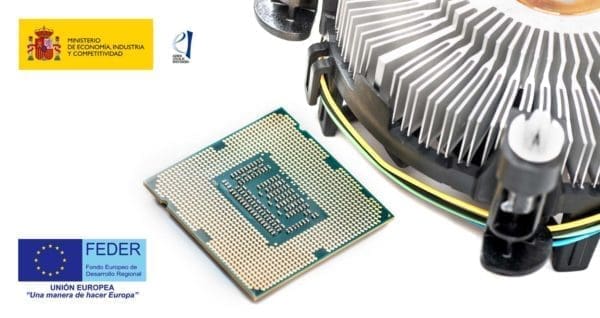LEADING THE CONDUCMYDE PROJECT
R&D PROJECT ON THERMAL AND ELECTRICAL CONDUCTIVE POLYAMIDES.
14/04/2020
One of the main strategies towards which many global manufacturers of parts are deriving for sectors such as automotive, LED lighting, electronics, etc. is the substitution of metals for polymers to reduce weight. The arrival of the electric vehicle makes it imperative to equip polymers with new functionalities such as thermal and electrical conductivity for the substitution of metals,,as these are heavier.
NUREL and AITIIP have collaborated for more than three years in an R&D project called Polymeric Materials with Thermal and Electrical Properties “à la carte” based on PA6 (RTC-2016-5055-5), under the acronym CONDUCMYDE. The main objective of this project was the design and development of new polyamides with high levels of thermal and electrical conduction.
Once the CONDUCMYDE project was completed and with the results in hand, both entities conclude that the project has been a success, since the development of 13 new advanced materials has been achieved.
Thanks to the progress made by this project, NUREL can now offer its customers 3 different ranges of products.
- A first range of products with high levels of thermal conductivity suitable to provide solutions to new applications where heat dissipation is sought, such as LED lighting. These materials also offer the possibility of being coloured.
- The second range of products has a high thermal conductivity and also a high surface and volumetric electrical conductivity.
- The third range of products combines high levels of electrical conductivity with outstanding thermal insulation. These functionalities make this range of materials an effective alternative to be use in the electrical sector, among others.
With these new functionalities of Polyamide 6, NUREL responds to the new needs of our customers. These new advanced materials can be customized according to the requirements of each application.
To learn more, check our conductive compounds information.
The project received funding from the Ministry of Science, Innovation and Universities of the Government of Spain with ERDF funds within the framework of the State Program for Research, Development and Innovation Oriented to the Challenges of Society, within the framework of the State Plan for Scientific Research and Technique and Innovation 2013-2016 and under the call for COLLABORATION CHALLENGES 2016.

